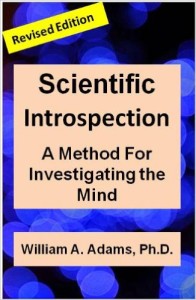 I was listening to a lecture on linguistics and the subject was Proto-Indo-European, (PIE) the prehistoric ancestor of English and many other languages. Words in the PIE language are derived from comparative analysis of all known existing and historical languages in a certain family, including Old English, Old German, Late West Saxon, Latin, Ancient Greek, Sanskrit, Ancient Persian, Lithuanian, and many other languages. PIE was spoken sometime between 5,000 and 10,000 years ago and may have originated somewhere around eastern Ukraine. The idea is speculative, of course, but based on solid linguistic and archeological evidence.
I was listening to a lecture on linguistics and the subject was Proto-Indo-European, (PIE) the prehistoric ancestor of English and many other languages. Words in the PIE language are derived from comparative analysis of all known existing and historical languages in a certain family, including Old English, Old German, Late West Saxon, Latin, Ancient Greek, Sanskrit, Ancient Persian, Lithuanian, and many other languages. PIE was spoken sometime between 5,000 and 10,000 years ago and may have originated somewhere around eastern Ukraine. The idea is speculative, of course, but based on solid linguistic and archeological evidence.
It was interesting to learn, for example that “bher” was a word in PIE, from which many other ancient and modern words are derived, such as bear (as in to bear a load, bear a child), to carry, to suffer, a barrow, a basket, and many others.
What’s most fascinating however is how these PIE roots are discovered. Linguists study how basic words, like “man,” “woman,” “horse,” “blood,” and “plow” appear in a wide selection of languages, ancient to modern, and combine that information with known processes of how languages evolve, split from each other, and combine, over long periods of time. Working those processes backwards, they can deduce what the original PIE word must have been.
For example, our word, “sister” is “swistar” in Gothic (350 CE), “soror” in Latin, “svasar” in Sanskrit, “sestra” in Slavic, “siur” in Celtic, and so on. Knowing how languages evolve, linguists deduce that the PIE word for sister was “swesor” (en.wikipedia.org/wiki/Indo-European_vocabulary).
My thought, listening to this lecture while driving through some hills with dramatic geological formations, was that this process of analysis and then running the data backwards through theoretical principles, such as those in plate tectonics, is exactly similar. You look at a strange geography and ask, “How did this landscape come to be this way?” You crank the processes backwards and realize that these spikey rocks were once sediments at the bottom of a lake. You can reconstruct the original landscape from the present-day data and some known theoretical principles.
Then I realized that same process is used in many sciences, such as astronomy and cosmology, to derive the Big Bang, for example. You have observed data and known processes of change that you can run in reverse, to get a fairly compelling account of how things used to be. Biology is the same way, from the classification of species to the understanding of cellular structures and even DNA itself.
But one field of study where that method is not used is my chosen field of psychology. For some reason (historical reasons), we are fixated on explaining today’s psychological phenomena in terms of persistent childhood events, such as trauma, or in terms of some direct causal lineage, such as stages of development. Psychological explanations are deterministic and linear. Psychologists do not use the methods of the other sciences, or of linguistics, to carefully unfold the many, many convolutions, splittings, and combinings of history. We are committed to simplistic, billiard-ball explanations: “A causes B.” Why?
It could be that psychological phenomena are unique and not susceptible to the kind of reverse-evolutionary analysis that other fields use. Or, more likely, it’s that we have very poor observational data to start with, due to the perverse history of the field that discounts introspective and phenomenological observation and insists on a primitive, outdated positivism. (See my full rant on this topic, “Scientific Introspection” bit.ly/scientific-introspection ).
Psychology’s problem might also be that we have few explanatory principles about how psychological phenomena evolve over time. Without those, we don’t have machinery we can crank backwards to see where today’s observed phenomena might have come from.
If I were younger, I would systematically re-think everything I know about psychological phenomena, looking for, not simple “A causes B” explanations, but subtle processes of evolution such as processes that fold back on themselves, split, combine and recombine. Explanations that look more like how the brain itself looks. It would be a different, potentially productive way to look at the field afresh.
